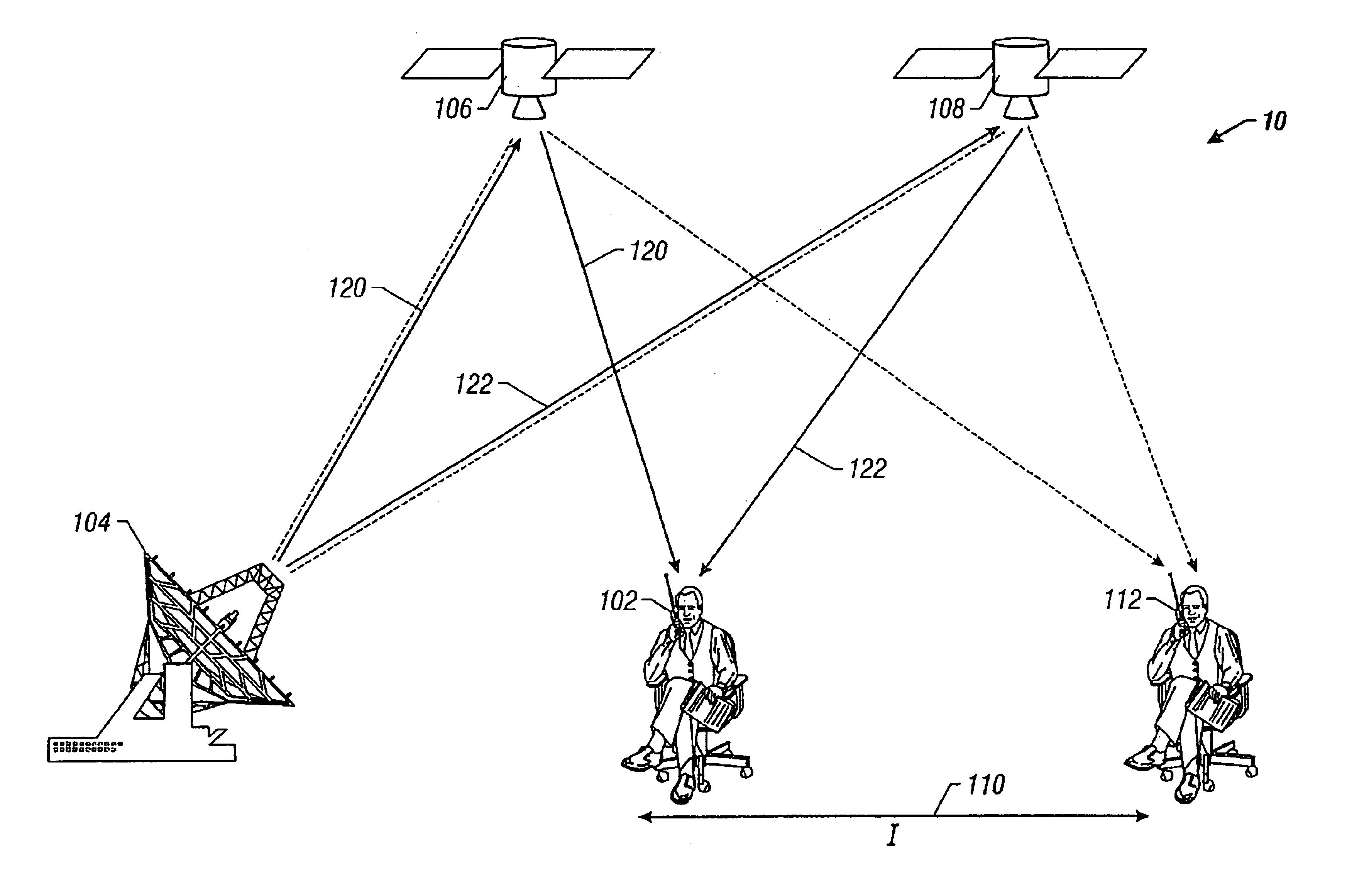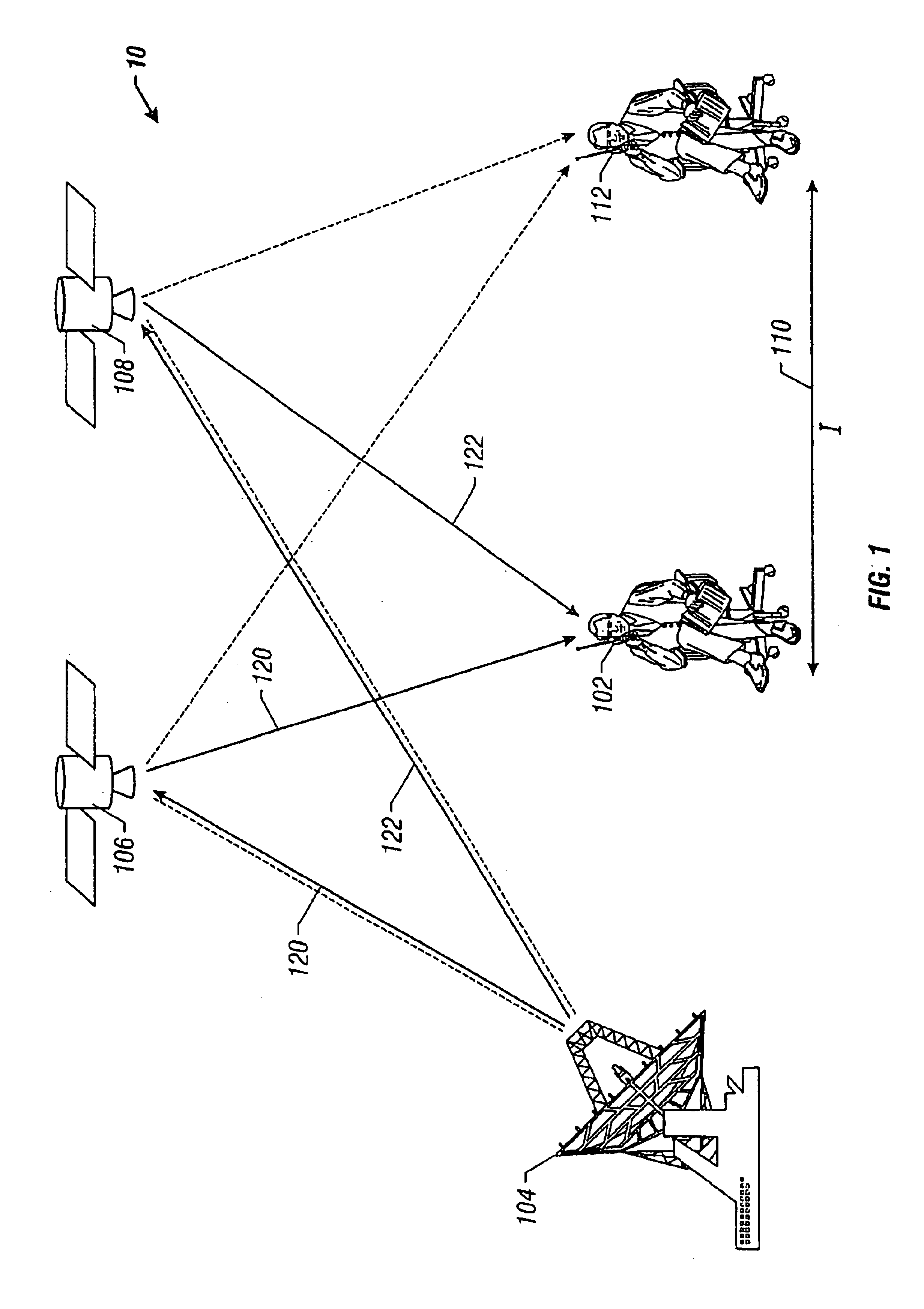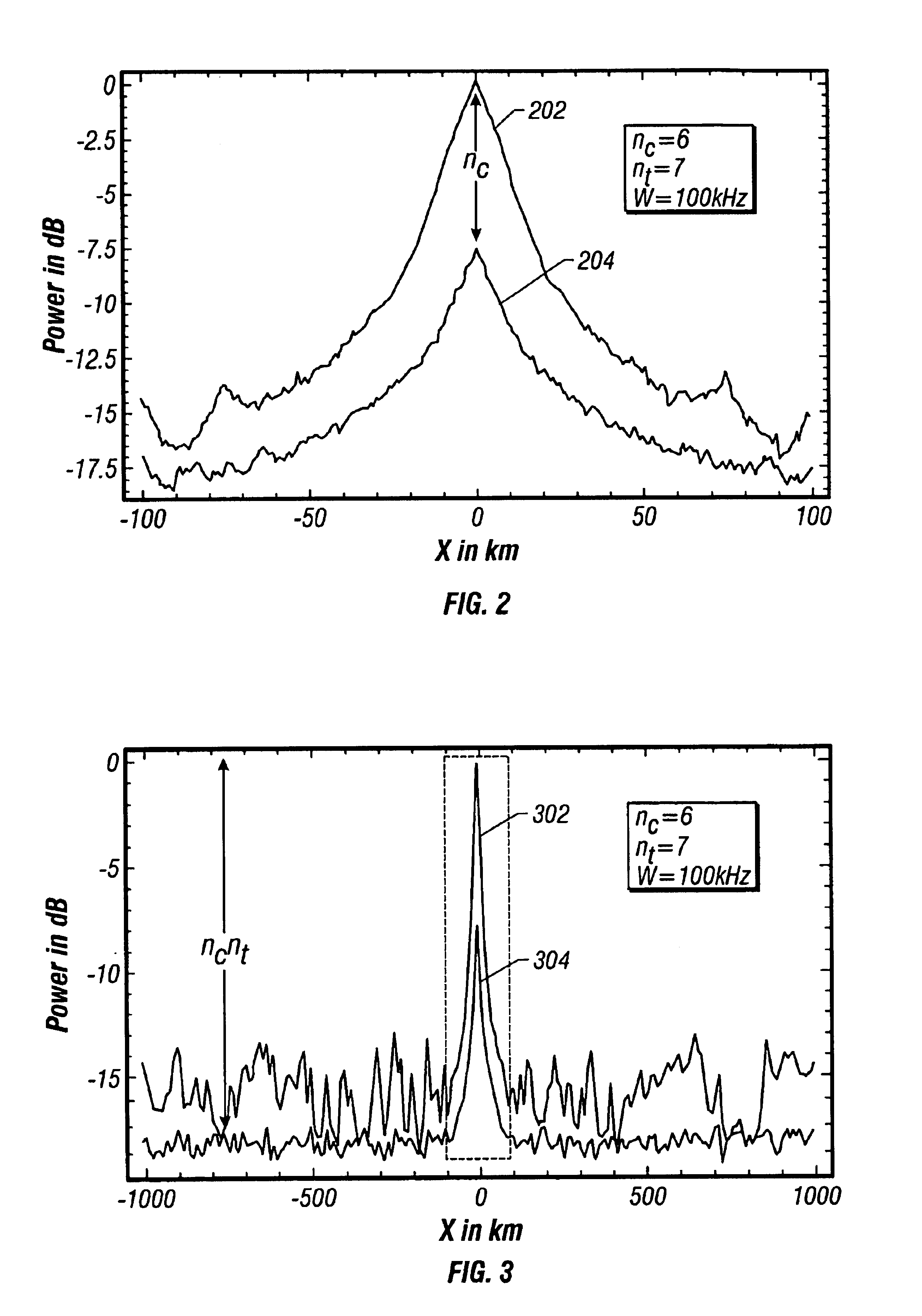Coherent synchronization of code division multiple access signals
a technology of multiple access and code division, applied in the field of code division multiple access (cdma) communication systems, can solve the problems of unrealized full potential and number of users, and achieve the effects of reducing the cost of receiving terminals, simplifying operation, and enhancing signal gain
- Summary
- Abstract
- Description
- Claims
- Application Information
AI Technical Summary
Benefits of technology
Problems solved by technology
Method used
Image
Examples
Embodiment Construction
[0025]The following description is presented to disclose the currently known best mode for making and using the present invention. The scope of the invention is defined by the claims.
[0026]FIG. 1 is a ram illustrating an exemplary multiple satellite communications system 10 suitable for use With the present invention for coherent synchronization of CDMA communications signals. In this example, single transponder satellites represent transponder platforms and cellular telephones represent subscribers. Alternatively, the transponder platforms may also be carrier signal frequency reflecting surfaces, and the subscribers may also be fixed or mobile terminals. Other suitable devices with sufficient field of view to cover the directions from which subscriber signals arrive and combinations thereof for relaying a signal from a gateway to a subscriber may also be use, whether fixed or mobile, on the ground, in the air, or in space. Similarly, subscribers may be any suitable devices and comb...
PUM
 Login to View More
Login to View More Abstract
Description
Claims
Application Information
 Login to View More
Login to View More - R&D
- Intellectual Property
- Life Sciences
- Materials
- Tech Scout
- Unparalleled Data Quality
- Higher Quality Content
- 60% Fewer Hallucinations
Browse by: Latest US Patents, China's latest patents, Technical Efficacy Thesaurus, Application Domain, Technology Topic, Popular Technical Reports.
© 2025 PatSnap. All rights reserved.Legal|Privacy policy|Modern Slavery Act Transparency Statement|Sitemap|About US| Contact US: help@patsnap.com



